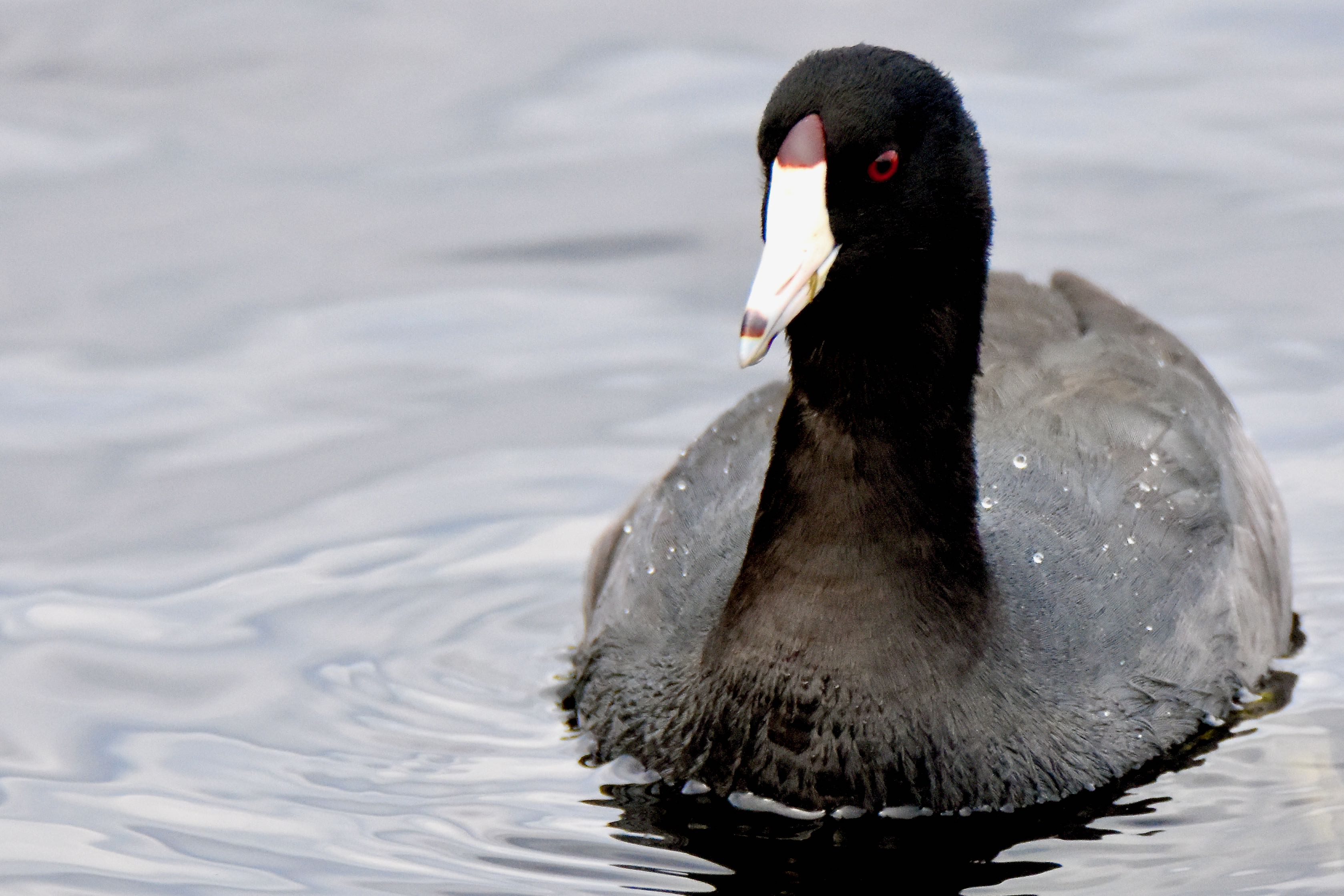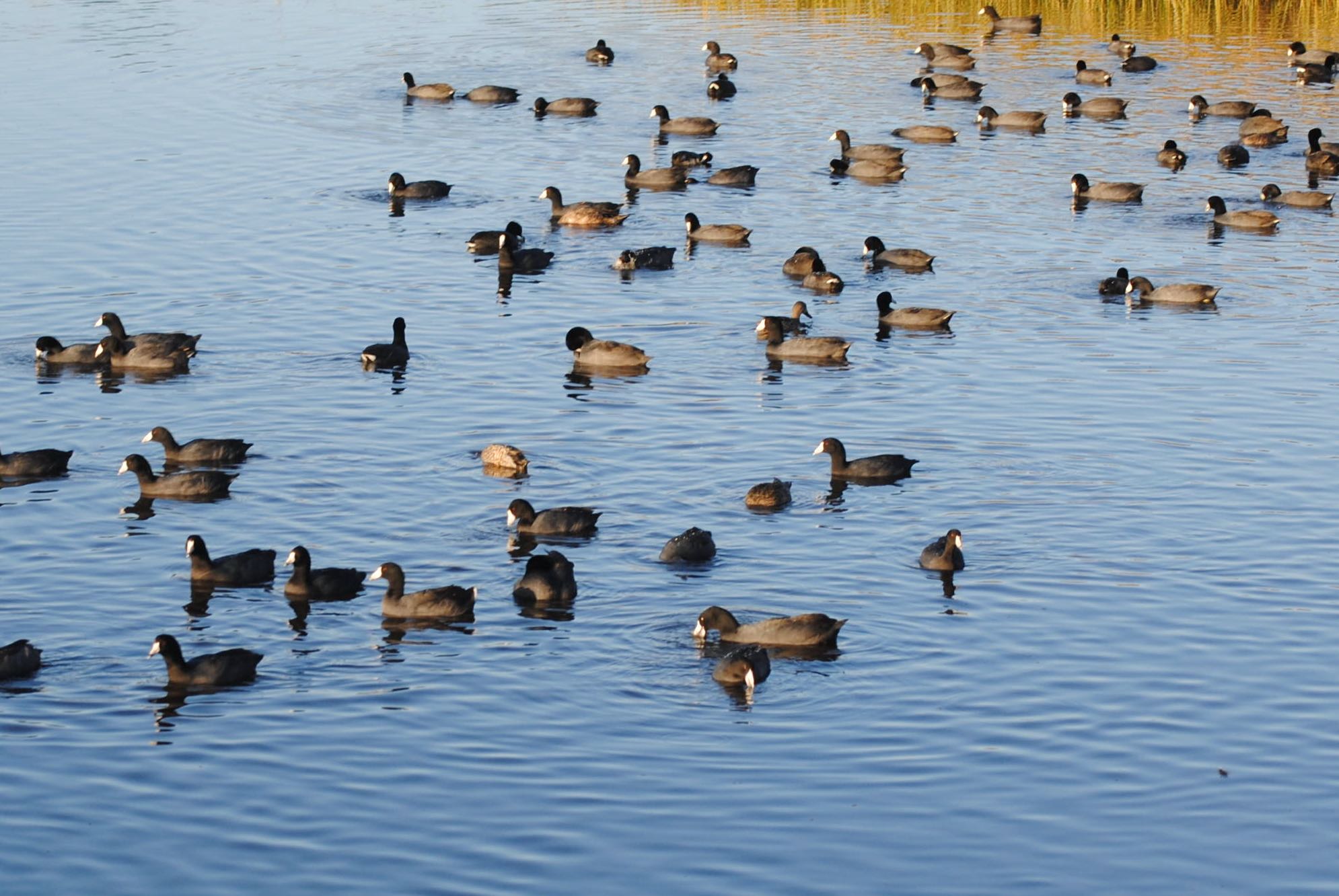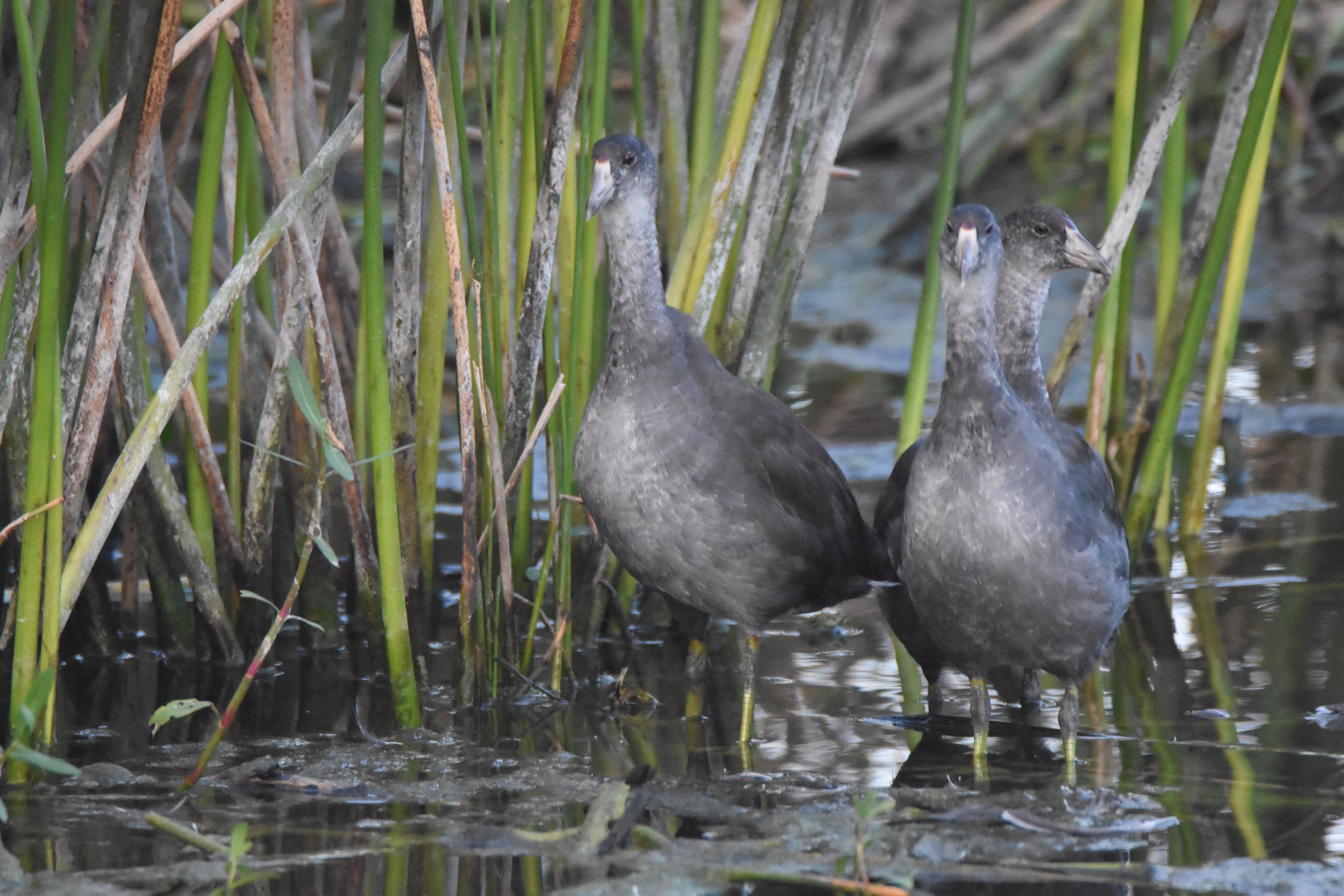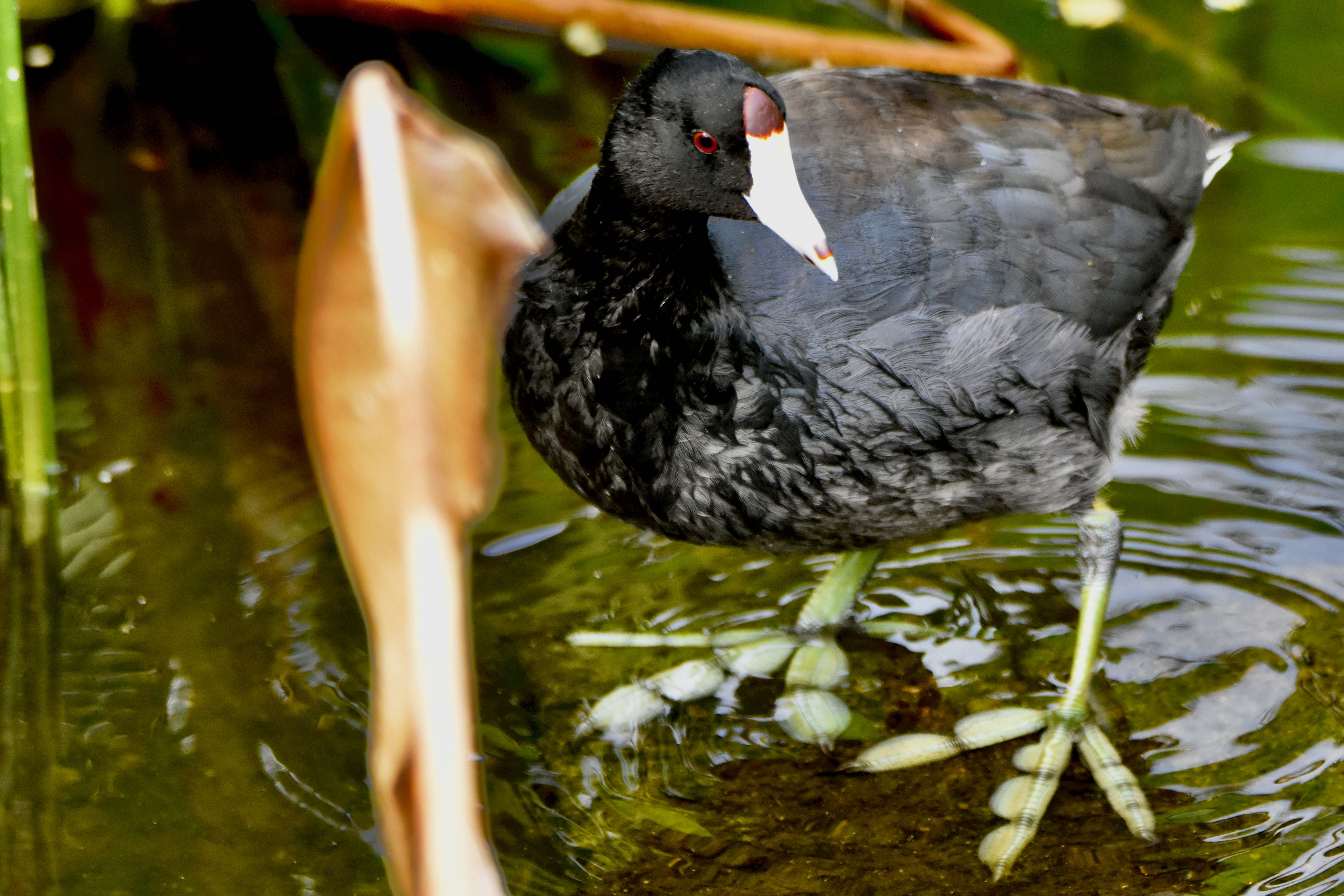
American coot, photographed at Green Cay Nature Center, Boynton Beach, Palm Beach County, in January 2017.
The American Coot, Fulica americana, is similar in shape and size to moorhens and gallinules, and is a quite commom winter-time visitor to South Florida. In habit, the three birds are somewhat similar, hanging out in lakes, ponds, marshes and wetlands. Coots, however, probably spend a little more time in the water than the other two and are built that way.
Coots have "lobed" feet, thick patches of skin on their toes that allow them to swim like ducks but also manuever on land. (You can see the feet in the photo at the top and more clearly below.) Moorhens and gallinules have long, wiry toes that allow them to climb the stalks of fireflag and other aquatic plants. All three birds are members of Rallidae, or the rail family, which also includes soras.
Coots are black-gray birds, with white bills and a white "shield" above it. They're chicken-sized, with a wingspan of about two feet and a body length that approaches 17 inches. They are not the most graceful flyers and need a "running" start to get into the air. They appear to run on water, striding with their legs and flapping their wings at the same time.
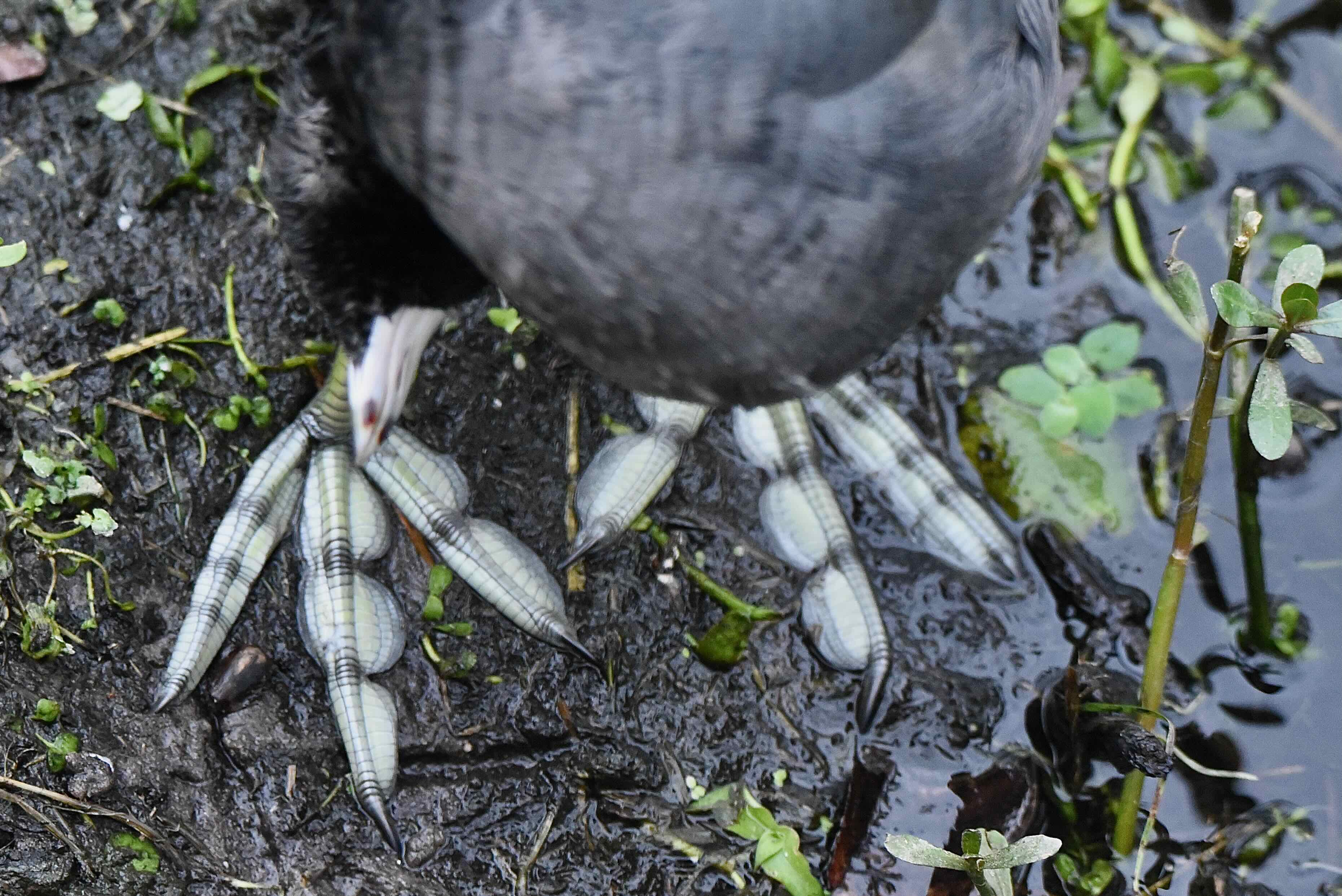
The lobed feet of an American coot.
Coots are largely vegetarians. You'll see them picking through aquatic plants — a large flock literally can go through tons of the stuff during the course of a season. But they also eat bugs, crustaceans, mollusks and small vertebrates.
Their range extends to the Yukon and Canada's Northwest Territories, where they spend summers breeding and raising young. They're winter visitors to much of the east coast but are year-round residents in the west and south to Mexico. Winter populations can be found as far south as Central America.
American coots do breed in Florida but mostly in northern and central parts of the state. A breeding survey that the Florida Fish and Wildlife Conservation Commission (link below) conducted in the late 1980s and early 1990s found a few confirmed nests in Palm Beach, Broward and Miami-Dade counties. We've seen coots in Palm Beach County as late as mid-summer, but no nests or young coots.
Coots breed in marshes and use aquatic vegetation to build floating nests about a foot in diameter that they anchor to reeds and other aquatic plants. They require some open water but also dense vegetation for concealment. Females lay clutches of eight to 12 eggs over a period of days. The eggs incubate between three and four weeks and hatch over a period of days. The fuzz-ball chicks are able to leave the nest within six hours of hatching but both parents continue to feed care for them. American coots mature in about two months..
Coots tend to congregate in large numbers, and they tend to be very, very noisy. They can be found anywhere there's water, deep or shallow. Coots are considered inedible because they just don't taste very good. However, they're one of the most hunted of birds. According to the Cornell Laboratory of Ornithology, hunters shot 720,000 of the birds in 1999 simply for sport.
Green Cay Nature Center

